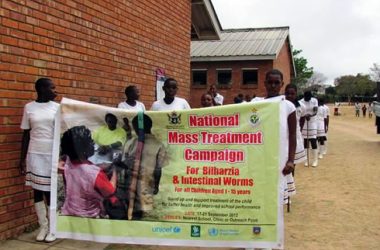By Conrad Mwanawashe

Antimicrobial resistance (AMR) continues to be a silent pandemic and a growing global public health threat and a bigger problem than HIV, Malaria and TB combined, stakeholders attending the World AMR Awareness Week heard, Monday.
AMR awareness week is a global event, taking place from 18 to 24 November each year and serves as a momentous occasion to raise awareness and take action against the growing threat of antimicrobial resistance.
AMR occurs when bacteria, viruses, fungi and parasites change over time and no longer respond to medicines making infections harder to treat and increasing the risk of disease spread, severe illness and death.
As a result of drug resistance, antibiotics and other antimicrobial medicines become ineffective and infections become increasingly difficult or impossible to treat.
“For us in Africa, AMR is a serious threat to our health security and economic growth. It is estimated that by 2050 millions of people on the continent could be affected if we do not act quickly and decisively. In fact, AMR has already been documented to be a bigger problem than HIV, Malaria and TB combined,” Africa CDC Deputy Director Dr Ahmed Ogwell said.
“As we look at AMR today, it stands as one of the leading public health challenges of the century. When we look at the continent of Africa, we document the highest mortality rates from AMR infections resulting in over 27 deaths per 100 000.
“This is a big concern to us at Africa CDC and the Africa Union. It is therefore, our responsibility to work together, plan together and to do that now because of this growing emergency,” he added.

This year’s theme is: “Preventing Antimicrobial Resistance Together,” and underscores the need for urgent multisectoral action under the One Health Approach to safeguard the effectiveness of antimicrobial medicines, according to Francesca Erdelmann, on behalf of the UN Resident Coordinator.
“It is crucial for us to take urgent multisectoral action to address this global health and development threat. Misuse and overuse of antimicrobials are major drivers in the development of drug-resistant pathogens.
“Inadequate access to clean water, lack of sanitation, and insufficient infection prevention and control measures further contribute to the spread of antimicrobial-resistant microbes,” Erdelmann said.
“In sub-Saharan Africa, the threat of AMR primarily arises from unregulated and inappropriate use of antimicrobials across various sectors, including human, animal, and plant use. The lack of policies guiding the procurement and use of medicines has led to the proliferation of substandard and falsified drugs.
“These factors not only jeopardize health but also endanger several key sustainable development goals related to health, agriculture, animals, the environment, and food security,” she said.
The World Health Organization (WHO) has even identified AMR as one of the top 10 global public health threats facing humanity. .
“Compared to other regions, sub Saharan Africa has the highest AMR associated deaths at 99 deaths per 100, 000 far exceeding previous global predictions. Additionally, which is quite a concern, there are over 214, 000 neonatal services deaths annually directly attributable to drug resistance pathogens.
“We’re seeing emerging resistance to treatments of HIV, TB and malaria which is a huge concern in the region,” WHO Assistant Regional Director, Dr Lindiwe Makubalo said.
“The key is collaboration, holding hands, working together as begin and continue dealing with AMR,” Dr Makubalo added.









